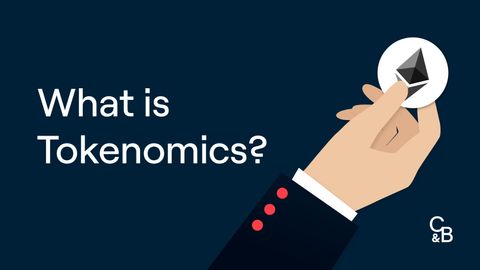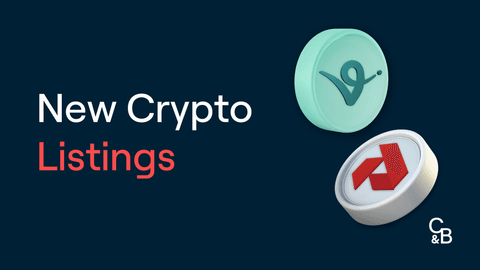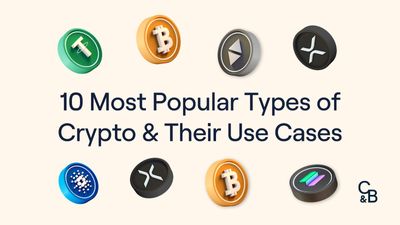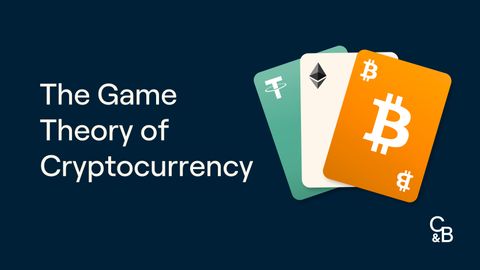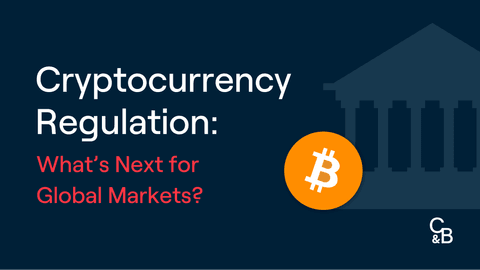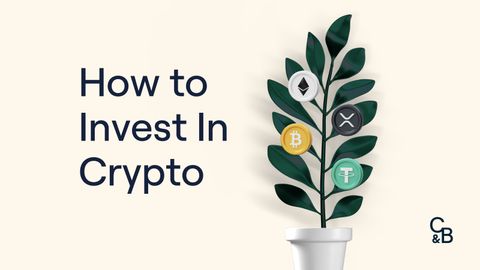Key Points
- Tokenomics is a catch-all phrase that describes the factors, specific to a token, that influence its value use cases.
- Tokenomics allows crypto developers to experiment with various game theories and concepts that can’t be easily tested in traditional markets.
- A variety of factors can influence the tokenomics of an asset, not limited to but including supply, utility, distribution, and incentive mechanisms.
When you invest in a cryptocurrency, you’re not just investing in an asset. You’re investing in an economic system.
A system with its own rules, bureaucracy, and infrastructure. This set of rules—or, tokenomics—is what differentiates a token from any of the other thousands of digital assets available on the market.
Why is this system so important? How do certain tokenomic factors make an asset more or less valuable in the eye of an investor? Keep scrolling to find out how it all works below.
What is Tokenomics?
Combine the words “token” and “economics” and you get tokenomics, a term that describes all the key features of a digital asset’s ecosystem that make it valuable to investors. Tokenomics covers economic characteristics like supply, distribution, utility, and more; factors that promote the continued use and investment of the token over time.
Ideally, tokenomics encourages investors to hold an asset and discourages selling.
A system that is designed in this way could indicate its potential to last for the long term. Conversely, poorly designed tokenomics may encourage investors to sell their assets, or speculate with them, instead of holding them.
Before a crypto project launches, founders will often publish a whitepaper. This document discloses what the coin is, how its underlying technology works and what its use cases are. Here, potential investors can find details about an asset’s tokenomics.
Fundamentals of Tokenomics
Creators of blockchain projects want to encourage or discourage certain actions on the network and/or project. They design tokenomic models so that participants use the token on the network, in the way that it is intended. This is similar to how banks and credit card providers create certain policies to encourage and reward spending, and discourage certain actions (like overspending).
There are a few fundamental parameters that project creators tweak and test to create a unique economic model for a token.
Token Supply
Whether it’s crypto or traditional markets, supply and demand is an essential part of any economy. There are two ways to measure token supply.
- Maximum Supply: This refers to the maximum amount of tokens that could ever exist on a network. The max supply is usually decided at the project launch.
- Circulating Supply: This refers to the number of tokens currently in circulation.
- Total Supply: The total amount of tokens created minus any burned tokens.
In some cases, projects are intentionally left uncapped. This could be due to the nature of how the coin operates. Some Stablecoins, for example, are issued based on the fiat reserves backing the coin. The max supply needs to be flexible to match their reserves. For example, there’s always $1 worth of fiat value backing every Tether USDT unit in circulation.
Token Distribution
Who owns the token, and how much do they own? Token distribution refers to how the token is distributed across various types of investors.
At project launch, tokens are usually distributed in one of two ways. In a fair launch, no private sales occur before the coin is released. Anyone with the means to purchase the coin can do so. In a pre-ICO launch, a portion of tokens are sold to private investors and/or allocated to project creators before becoming publicly available.
Token distribution could influence the risk profile of an asset. If a disproportionate share of tokens are owned by a few select investors, a project could be considered riskier. If a token is more evenly distributed, investor activity (either buying or selling) is more evenly distributed and less likely to cause extreme price swings, often materialising as strong sell pressure.
Lock-Up Periods
In certain cases, such as initial coin offerings (ICOs) for early investors, token sales are locked up for a pre-planned amount of time. In these situations, investors are prohibited from selling their tokens for the duration to prevent extreme price depression. These periods are usually implemented to maintain the long-term stability of a particular asset. They can also be rolled out during periods when a blockchain is undergoing key upgrades, like Ethereum’s Merge.
Release Schedules
Sometimes a project may release more of its token(s) into circulation. This could be a protocol that releases tokens when certain conditions are met, or a decision made by the creators/investors themselves. Releasing new coins into the market ultimately influences the available supply of the token, which could weigh down its price, due to the law of supply and demand.
Incentive Mechanisms
To encourage positive participation and discourage bad actors, creators may implement certain rules to incentivise fair play. These incentives are usually carried out through a protocol known as a consensus mechanism, a system used to validate transactions and secure the network.
One example of this is Proof of Stake (PoS). This consensus mechanism rewards participants for validating transactions and flagging potentially fraudulent ones. To become a validator you must deposit a stake onto the network. If validators act dishonestly on the network, they run the risk of losing all of their staked assets.
Other incentive mechanisms reward users for sharing resources with the wider network. On the Theta network, participants can share their unused bandwidth with other users. In exchange, they are rewarded the native token TFUEL, which has a variety of uses on Theta. It’s worth noting that incentive mechanisms typically only apply to fee tokens, assets that are used to facilitate transactions or pay fees on a network.
Token Utility
Utility should be at the heart of every crypto project seeking to attain long-term success. What real-world problems does this project seek to solve through crypto? Will solving these problems make any lasting impact? Consider a token’s various use cases before investing.
Some tokens have platform-specific utility, such as XRP. Their value is derived from the use cases it has on the network. It could be used to pay transaction fees, network services, or governance. Governance tokens allow users to vote on proposed network or protocol changes, and are valuable to users who want to take an active role in the direction of a project. They could wade in on decisions about supply schedules, for example.
Ethereum’s native token Ether (ETH) has a variety of use cases on the network. ETH is required for staking, and is also rewarded to stakers. ETH is needed to pay for transactions and is often used as currency to buy and sell NFTs, as well as services made available through decentralised apps (DApps).
Burn Mechanisms
In order to regulate supply and demand, many crypto projects also have a burn mechanism, such as Etheruem, to permanently remove tokens from circulation at regular intervals.
Some projects will burn tokens to combat the possible effects of inflation. In a way, these tokens become deflationary, reducing in quantity over time. In this way, burning could increase the price or value of an asset, as less and less of it becomes available over time. It’s almost like a stock buy-back – increased scarcity drives up the value.
For Ethereum, ETH is taken out of circulation on every transaction – a portion of the network/gas fee is burnt. This can lead to reducing supply, if there’s high enough demand on the Ethereum network, whereby transaction fees increase and the amount of ETH burnt, too. As a result, more ETH is being removed from circulation than is being introduced.
Why is Tokenomics Important?
Creating monetary policies around a digital asset that are smart, intuitive, and designed well, can incentivise investors to buy and hold an asset for the long term. It also encourages investors to continue participating in a network for the benefits it provides.
Projects that do not design an ecosystem on their token may find it hard to sustain adoption, as users have no real reason to stay invested or involved in the project. Good tokenomics keeps investors on board, which attracts more participants, potentially boosting the price of the asset.
However, there are exceptions to every rule. The tokenomics of many memecoins such as Dogecoin (DOGE) and Shiba Inu (SHIB) have loose and haphazard tokenomics, but still remain fixtures in the top 20 most valuable cryptocurrencies by market cap.
Game Theory in Crypto
Over the centuries, economic models have changed and evolved to reflect society. We’ve gone from bartering cattle and trading coffee beans, to precious metals, fiat money, and now digital assets.
As our society moves towards decentralisation, our economic systems have remained largely centralised. With monetary power mainly in the hands of governments, banks, and other large entities, it leaves little room for the layperson to experiment outside the current economic model.
Tokenomics allows us to test different models and incentives in a Web3 environment. These models could lead to new economic ideas that better align with where our society is heading. Game theory is no longer left to think tanks and economic scholars. It’s being tested in the real world right now through crypto.
FAQs
Where can I find tokenomic information for a particular asset?
A token’s whitepaper will often have all the information you need to understand its tokenomics. If a project doesn’t have a whitepaper, tokenomic details may be available on its official website. Lastly, you can always refer to one of our many beginner guides where we dive deep into the economic models of a particular project.
Are there certain tokenomic features more ideal than others?
You can think of each core feature of a token’s economics as one cog in a larger machine. A feature on its own carries little weight. But combine all the elements together and you get a unique economic model that is comparatively different from other assets on the market.
It is worth noting that coins that have lasting utility (e.g. solving real-world problems) may have an ideal tokenomic model.
What are the tokenomics for Bitcoin?
You can find Bitcoin’s tokenomics here.
Consider Tokenomics Before Investing
Understanding the tokenomics of a particular asset can help you decide whether it’s worth your investment (or not).
At Caleb & Brown, we provide 24/7 support to all of our investors, guiding them to make independent, well-informed decisions on every investment.
Our personalised broker service makes crypto investing simple. A dedicated member of our brokerage team is always on hand whenever you need them, giving you the confidence you need to navigate the world of cryptocurrency. Not to mention we offer key features such as:
- No joining or signup costs
- trade over 250 crypto assets
- Zero deposit and withdrawal fees
If you are ready to take the next step and start investing, contact your crypto broker today.
Not yet a client? Sign up for your free consultation.
Disclaimer: This assessment does not consider your personal circumstances, and should not be construed as financial, legal or investment advice. These thoughts are ours only and should only be taken as educational by the reader. Under no circumstances do we make recommendation or assurance towards the views expressed in the blog-post. Past performance is not a reliable indicator of future results. The Company disclaims all duties and liabilities, including liability for negligence, for any loss or damage which is suffered or incurred by any person acting on any information provided.
from Caleb & Brown Cryptocurrency Brokerage.
